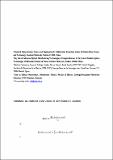Por favor, use este identificador para citar o enlazar a este item:
http://hdl.handle.net/10261/208714COMPARTIR / EXPORTAR:
 SHARE SHARE
 CORE
BASE CORE
BASE
|
|
| Visualizar otros formatos: MARC | Dublin Core | RDF | ORE | MODS | METS | DIDL | DATACITE | |

| Campo DC | Valor | Lengua/Idioma |
|---|---|---|
| dc.contributor.author | Zhang, C. | - |
| dc.contributor.author | Cao, G. | - |
| dc.contributor.author | Wu, S. | - |
| dc.contributor.author | Shao, W. | - |
| dc.contributor.author | Giannini, V. | - |
| dc.contributor.author | Maier, S.A. | - |
| dc.contributor.author | Li, X. | - |
| dc.date.accessioned | 2020-04-23T07:23:11Z | - |
| dc.date.available | 2020-04-23T07:23:11Z | - |
| dc.date.issued | 2018-10-31 | - |
| dc.identifier | doi: 10.1016/j.nanoen.2018.10.051 | - |
| dc.identifier | issn: 2211-2855 | - |
| dc.identifier.citation | Nano Energy 55: 164-172 (2019) | - |
| dc.identifier.uri | http://hdl.handle.net/10261/208714 | - |
| dc.description | 9 pags., 6 figs. | - |
| dc.description.abstract | There are currently extensive interests on the hot-electron-mediated photoconversion. However, the device quantum yield is fundamentally low due to the existences of various hot-electron loss channels; moreover, the nanostructured plasmonic/metamaterial are generally required, which bring challenges to the low-cost and large-scale fabrication. In this study, we focus on distinguishing the thermodynamic losses in hot-electron devices and presenting the possible route-maps for performance improvement. It is shown that a number of optical, electrical, and material factors, which lead to the substantial losses of hot electrons during the generation, transport, and emission processes. These loss mechanisms involve extensively the photon absorption, resistive dissipation, electron/electron or electron/phonon thermalization, carrier diffusion, Schottky barrier, and electron-momentum conservation. We further exemplify several planar hot-electron systems to show the possibilities of breaking these limitations for high efficiency. The planar hot-electron devices are based on Tamm plasmons, microcavity with double barriers, and optimized system by controlling the barrier and electron density of state, respectively. Results indicate that these designs can significantly improve the efficiencies of hot-electron generation, transport, and collection. It reveals that the external quantum efficiency of the system after the multi-domain optimization can be up to 60% in the near-infrared band. This study will motivate deeper understanding on the physical mechanisms, which restrict the performance of hot-electron device, and provide the solutions to improve the performance of hot-electron devices. | - |
| dc.description.sponsorship | This work is supported by National Natural Science Foundation of China (61675142, 61875143, and 61775154), the Academic Start-up Funding of Soochow University (GD15900118), Natural Science Research Project of Jiangsu Higher Education Institutions (17KJA480004), and Priority Academic Program Development (PAPD) of Jiangsu Higher Education Institutions | - |
| dc.language | eng | - |
| dc.publisher | Elsevier | - |
| dc.relation.isversionof | Postprint | - |
| dc.rights | closedAccess | - |
| dc.subject | Hot electrons | - |
| dc.subject | Photoconversion | - |
| dc.subject | Thermodynamic losses | - |
| dc.title | Thermodynamic loss mechanisms and strategies for efficient hot-electron photoconversion | - |
| dc.type | artículo | - |
| dc.identifier.doi | 10.1016/j.nanoen.2018.10.051 | - |
| dc.relation.publisherversion | http://dx.doi.org/10.1016/j.nanoen.2018.10.051 | - |
| dc.date.updated | 2020-04-23T07:23:11Z | - |
| dc.contributor.funder | National Natural Science Foundation of China | - |
| dc.contributor.funder | Soochow University | - |
| dc.contributor.funder | Natural Science Foundation of Jiangsu Province | - |
| dc.relation.csic | Sí | - |
| dc.identifier.funder | http://dx.doi.org/10.13039/501100001809 | es_ES |
| dc.identifier.funder | http://dx.doi.org/10.13039/501100007824 | es_ES |
| dc.identifier.funder | http://dx.doi.org/10.13039/501100004608 | es_ES |
| dc.type.coar | http://purl.org/coar/resource_type/c_6501 | es_ES |
| item.fulltext | No Fulltext | - |
| item.openairecristype | http://purl.org/coar/resource_type/c_18cf | - |
| item.cerifentitytype | Publications | - |
| item.grantfulltext | none | - |
| item.openairetype | artículo | - |
| Aparece en las colecciones: | (CFMAC-IEM) Artículos | |
Ficheros en este ítem:
| Fichero | Descripción | Tamaño | Formato | |
|---|---|---|---|---|
| accesoRestringido.pdf | 15,38 kB | Adobe PDF |  Visualizar/Abrir | |
| Supporting Information.pdf | 541,96 kB | Adobe PDF |  Visualizar/Abrir |
CORE Recommender
SCOPUSTM
Citations
51
checked on 20-abr-2024
WEB OF SCIENCETM
Citations
48
checked on 19-feb-2024
Page view(s)
170
checked on 23-abr-2024
Download(s)
362
checked on 23-abr-2024
Google ScholarTM
Check
Altmetric
Altmetric
NOTA: Los ítems de Digital.CSIC están protegidos por copyright, con todos los derechos reservados, a menos que se indique lo contrario.
